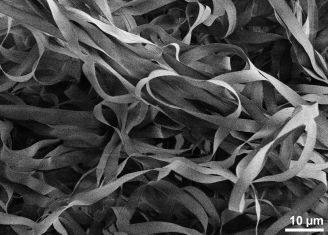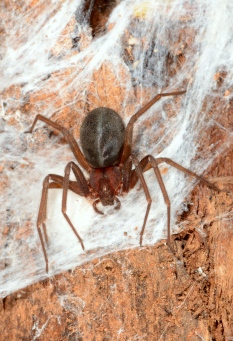I. L. F. Magalhaes, A. M. Ravelo, C. L. Scioscia, A. V. Peretti, P. Michalik and M. J. Ramírez. (2017) Journal of Zoology, DOI: 10.1111/jzo.12462
Silk is one of the most fascinating biological materials – it can be as tough as steel, and twice as elastic. This remarkable substance is exclusively produced by arthropods – such as silkworms, which are the larval stages of the moth Bombyx mori. Among all arthropods, a particular group has achieved the highest complexity of the types of silk they produce and the uses they make of it – spiders. There are some 46,000 described species of spiders, and, without a single known exception, all of them are capable of producing silk. Spiders have up to four (but usually three) pairs of specialized organs at the end of their abdomens called “spinnerets”, which are mobile appendages associated with the glands that produce silk. Silk is secreted by these glands in the liquid state, and the very act of pulling it through the apertures of the silk ducts – called “spigots” – makes it change its conformation to solid. Each type of silk gland produces a different type of silk, and a single spider species may have as much as seven types of glands.

Among spiders, a particular genus produces a unique kind of silk found nowhere else in the animal kingdom. The recluse spiders of the genus Loxosceles, infamous for containing some species whose venom can cause severe symptoms in humans, are also peculiar regarding their silk. Their anterior spinnerets have a modified spigot with a slit-like aperture – in comparison, regular spigots have a circular aperture. As a consequence, the silk threads they produce are extremely flattened (Fig. 1). Interestingly, they have only two of these modified spigots. However, their entire webs are composed of these flattened strands (Fig. 2). How is it possible for them to build such large webs from a single pair of spigots?

While observing females of Loxosceles laeta, a common South American species, we noticed they have a very peculiar spinning behavior. Their spinnerets seemed to move very rapidly, with silk accumulating at a fast rate; then the spider moved, stretching the silk strands (Video 1). Interestingly, they never used the legs or the substrate to pull the silk strands. As I mentioned above, silk changes from liquid to solid when it is pulled – thus, if neither the legs nor the substrate were being used to pull the strands, how was the spider spinning?
To investigate this, we immobilized some females by placing them in glass tubes and filmed their spinnerets while they produced silk. At first, we were amazed to see how fast they moved – about 8 to 13 times per second. When we reduced the speed of the videos, we were stunned – the spider was apparently using the posterior spinnerets to pull the silk strands produced in the anterior spinnerets! (Video 2) This was a much unexpected observation, because so far all arthropods use their legs or the substrate to pull silk strands. If Loxosceles was indeed using the spinnerets themselves to pull silk strands, this would be the first record of a self-sufficient spinning apparatus – that is, spinnerets that can complete all the work of spinning without external help.
Of course, we wanted to confirm this result. Therefore, we proceeded to manipulate specimens. We selected three females and interfered with their posterior spinnerets – either by gluing them together so they could not move (but letting the anterior spinnerets free, so silk could still come out of them), or by removing the hairs from the posterior spinnerets, which we suspected might be important for pulling silk strands. If the posterior spinnerets were truly involved in silk spinning, then the manipulated specimens should be unable to produce webs normally, even if the anterior spinnerets had not been interfered with. And that is what we observed – even after several weeks, these manipulated spiders could not spin normal webs, but only rather thin meshes of threads, or no web at all (Fig. 3).

Loxosceles have highly modified spinnerets (Fig. 4). After comparing their morphology with that of closely related spider families, we could observe that these modifications are all related to their unique spinning behavior. For example, they have a unique type of hairs in the posterior spinnerets that allow them to pull the silk strands from the anterior spinnerets. The anterior spinnerets are unusually long, and separated from the posterior spinnerets by a notable distance – which we hypothesize might be related to pulling a longer strand of silk in each beat of the spinnerets. Finally, they also have a very different muscular system associated to spinnerets (Video 3), with long and thin muscles which allow them to move the spinnerets in a fast way.

We have found that Loxosceles not only has unique silk strands – they also have a unique spinning behavior, which is possible because of the morphological modifications in their spinnerets and spigots. More importantly, this allowed us to discover the first known arthropod capable of spinning using only its spinnerets, without help of the legs or the substrate – once more highlighting the beautiful diversity of the spinning work of spiders.
Ivan Magalhaes
Video 1: A female recluse spider spinning its web.
Video 2: The spinnerets of a recluse spider while at work, reduced to 20% of the original speed.
Video 3: A 3D reconstruction of the muscles associated to the spinnerets of a male recluse spider obtained using X-ray microscopy.
Leave a comment